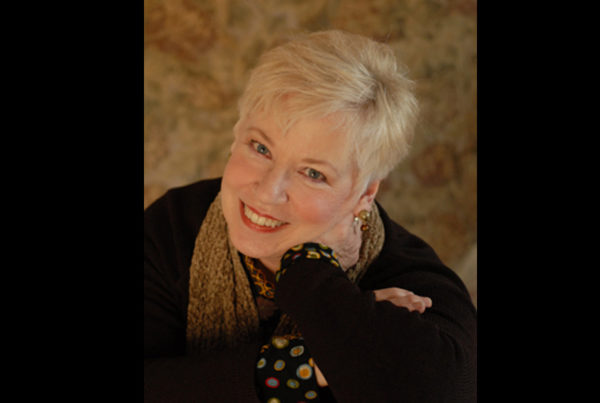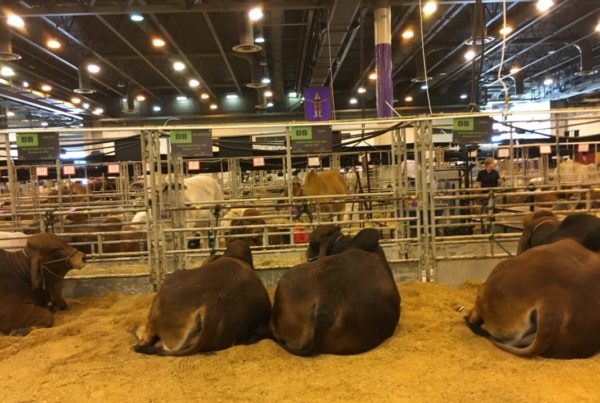This weekend in Corpus Christi thousands attended Fiesta de la Flor– the celebration that celebrates the late singer Selena.
This month seems to be all about Selena. It’s the anniversary of her death. She was 23 years old when she was killed in 1995. And it’s also the 20th anniversary of the release of a bio-pic about her, starring Jennifer Lopez.
During her short life, Selena’s songs and persona appealed to thousands of people.
But in the years since her death, she’s been embraced by the LGBTQ community in general and by one woman in particular
In a YouTube video, the auditorium is pitch black. Dialogue from the 1997 Selena movie plays in the darkness. Suddenly a bright white spotlight hits center stage, revealing Honey Andrews. Selena’s 1992 hit “Como La Flor” floods the venue and Andrews starts dancing. The crowd erupts into applause and cheers as Andrews shows off her black leather pants and a bedazzled red bra.
Media outlets like Fusion and Cosmopolitan have argued that Andrews is one of the country’s best Selena impersonators. Andrews performs iconic Selena choreography, and lip-syncs without missing a beat.
Thirty-one-year-old Andrews has been doing this for years. Before she performed in front of an audience, she practiced in front of her mirror at home. As a little boy, Andrews spent hours dancing to Selena songs, pretending to be the singer. Selena became one of Honey Andrews’ biggest idols. In fact, Selena was in part, the woman Andrews wanted to be.
“She was just an amazing, amazing woman all around, “ Andrews says. “She had everything not a lot of celebrities had. She had the whole package. She had talent, she had beauty, she had poise. She was always such a down to earth person and she wasn’t that stuck-up celebrity that would turn down people, no.”
But Selena wasn’t just someone she looked up to. Andrews says the singer helped her find her identity as a trans woman.
The transition was still confusing for her family.
It’s very hard for any Mexican family having to accept a different family member,” Andrews says. “It’s a very hard subject to bring up on a Mexican family, you know, having their little boy slowly blossoming into a woman.”
Andrews and many others in the LGBTQ communities now hail Selena’s legacy.
Deborah Paredez is a professor at Columbia University and the author of Selenidad: Selena, Latinos and the Performance of Memory. Paredez says Selena gave the LGBTQ community a new kind of icon – a brown, curvy, icon – someone who thrived outside of the traditionally celebrated European ideal of beauty.
“Suddenly Selena became a figure who brown folks could perform and assert both a cultural pride in reimagining what glamor might look like,” she says.
Andrews says she only performs as Selena, and it’s never been her intention to be Selena 100% of the day. but she does say they actually have some similarities.
“We’re both Latinas, dark skin, long hair, long black hair, you know and full lips,” she says.
Unlike rock and roll, Selena did not create a chasm between the generations. She was someone grandmothers and grandchildren listened to.
“For many queer communities, whose families of origin had shunned them, or had been exiled from their family origins because of families not accepting them for who they were…because of Selena’s cross generational appeal, Selena became a way, and folks talked about this,” Paredez says. “I know one of my interviewees talked about Selena providing a way for queer folks to come home. Right? Provided an avenue, this point of connection, sometimes, between themselves and their family of origin that allowed for that. Even if they couldn’t literally go back home to those families it provided for them this a kind of representational space, or a sonic space, or a space of desire where a sense of cultural identification, or a familial one, and a sexual identification could kind of come together in a moment of resolution.”
That’s one connection Honey Andrews and her parents could always count on. And for some reasons that are hard to understand, Selena is far from an icon of the past. Her music is now attracting the younger generation. At this weekend’s concerts for Fiesta de la Flor, you could see toddlers wearing glitzy Selena caps and older children singing along. They too were falling in love with Selena – decades after her death.
















